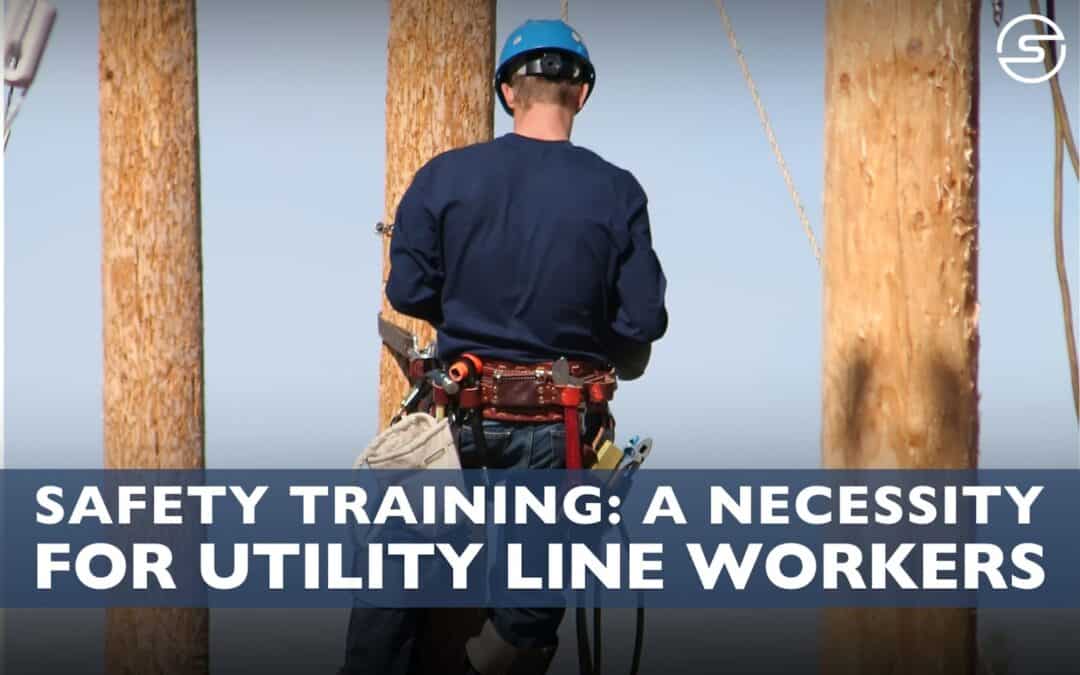Utility line workers are exposed to various hazards on the job, including electrical shock, falls, and burns. As a result, safety training is crucial to ensure their safety and the safety of those around them.
Line work is consistently a profession that ranks at the top of one of the riskiest jobs, simply by its nature. The federal Occupational Safety and Health Administration (OSHA) within the U.S. Department of Labor has an entire section of its regulations, Section 1910.269, to address the safety standards for workers who work in “electric power generation, control, transformation, transmission, and distribution lines and equipment.” Every power company takes safety very seriously, and safety training is a critical component of training for new line workers and part of the ongoing training for experienced personnel.
Safety Risks In Line Work are Manifold
Exposure to live electrical wires and equipment is, of course, dangerous enough. While that is always one of the most significant risks to line workers, the dangers that line workers face go far beyond that. As a result, safety is not just an “add-on” for these workers. Instead, safety must be ingrained by consistent and repeated enforcement of safety protocols so that it becomes a habit ingrained in the behavior of all line workers.
The following are some key safety issues that utility line workers must receive training for:
- Electrical Safety Training: Utility line workers must receive training that explains the dangers of working with electricity and electrical components. This includes learning about the different types of electrical hazards and how to perform every task they may be called upon to perform in conformance with strict safety protocols.
- Fall Protection Training: Utility line workers must receive training on properly using fall protection equipment, such as harnesses and lanyards when working at heights. They must also be trained on how to identify potential fall hazards and how to properly set up and use fall protection systems.
- Personal Protective Equipment (PPE) Training: Utility line workers must be trained on the proper use of PPE, such as hard hats, PVDs, safety glasses, gloves, boots, and flame-resistant clothing. They also have to be diligent about repairing or replacing any damaged PPE so that it adequately protects them from direct contact with energized lines or equipment.
- Heat Safety: One job safety issue that sometimes gets overlooked or discounted is the risk of heat exhaustion and overexposure. Utility line workers wear heavy PPE clothing and often spend extended time in the sun. When up on a pole or in a bucket truck, shade may be non-existent. It is easy to get overheated and dehydrated quickly.
- Emergency Response Training: Utility line workers must be trained to respond to emergencies, such as an electrical shock or fall. They receive training on how to administer first aid to themselves and others, how to get injured workers safely moved, and how to avoid injuring themselves when rendering aid to others.
- Vehicle Safety Training: Utility line workers must receive training on the safe operation of vehicles and equipment, such as trucks, bucket trucks, and diggers used on the job. This includes understanding the risks associated with driving and operating heavy equipment and how to properly maintain and inspect their vehicles.
- Hazardous Material Training: Utility line workers must be trained to identify and handle hazardous materials they may come into contact with on the job.
- Job-Specific Training: Utility line workers must receive training on the specific tasks they will be performing, such as pole climbing, wire pulling, or underground work, and how to execute the specific tasks safely. This often requires performing the job following a series of steps in a particular order.
Safeguard Equipment®: Keeping Line Workers Safe
Safety training and safety practices are woven into the profession of being a utility line worker. Consequently, those of us who provide safety equipment for line workers are focused on improving the products these workers need, whether gloves, boots, or, in our case, Personal Voltage Detectors (PVDs), so that they are easy to use and robust.
At Safeguard, we design and manufacture lightweight, portable PVDs that workers can clip onto their hats. Because electrical and electromagnetic fields cannot be seen, heard, or felt, our PVDs give line workers a sixth sense that tells them of the presence, proximity, and location of electrical dangers. Workers’ lives have been saved by using our COMPASS PVDs. We are proud to play a critical part in protecting these unsung heroes who keep our lives comfortable and safe. For more information about Safeguard PVDs, including our all-new COMPASS Pro emergency response solution, contact Safeguard Equipment today.
Views: 29

